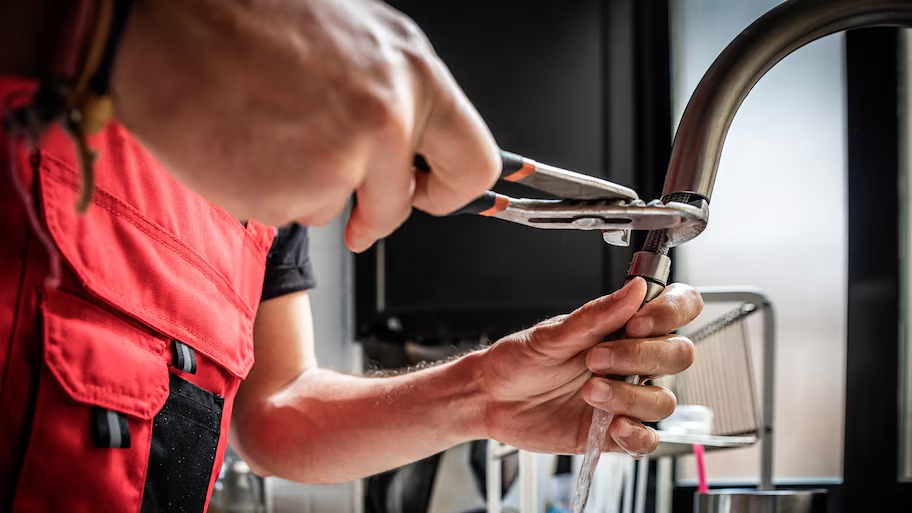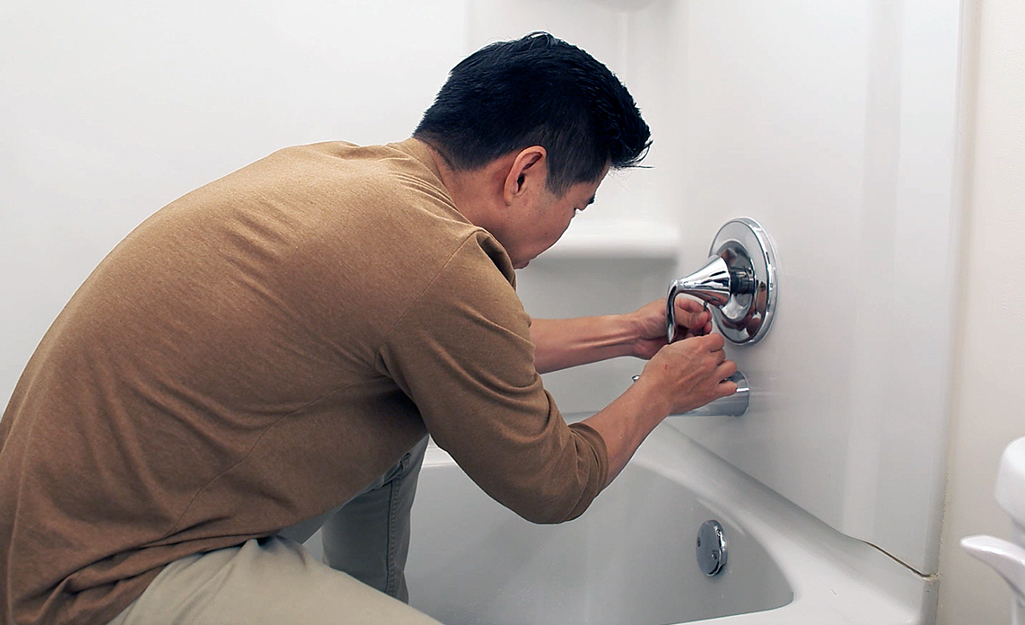What are your concepts on Leaky Faucets: Why They Happen & What to Do About Them?

Dripping faucets could look like a minor aggravation, but their effect surpasses simply the annoyance of the sound. From wasting water to incurring unnecessary monetary prices and wellness threats, overlooking a trickling tap can cause different repercussions. In this short article, we'll delve into why it's essential to address this typical family concern immediately and properly.
Waste of Water
Ecological Influence
Dripping taps contribute dramatically to water wastage. According to the Environmental Protection Agency (EPA), a solitary faucet leaking at one drip per secondly can waste more than 3,000 gallons of water per year. This not only stress water sources but likewise impacts ecological communities and wild animals depending on them.
Financial Prices
Raised Water Bills
Beyond the ecological influence, trickling faucets can inflate water costs significantly. The built up wastefulness over time equates into greater utility expenditures, which could have been prevented with timely repair services.
Potential Building Damage
Additionally, prolonged trickling can cause damage to components and surface areas bordering the tap. Water build-up can trigger discoloration, rust, and also architectural concerns if left neglected, resulting in added repair costs.
Health Worries
Mold and Mildew Growth
The constant visibility of moisture from a leaking faucet creates a perfect environment for mold and mold growth. These fungi not just jeopardize indoor air quality yet additionally position health dangers, especially for people with respiratory conditions or allergies.
Waterborne Diseases
Stagnant water in leaking faucets can end up being a breeding ground for bacteria and other pathogens, raising the threat of waterborne illness. Impurities such as Legionella germs prosper in stationary water, potentially bring about major ailments when ingested or inhaled.
Do it yourself vs. Specialist Repair work
Pros and Cons of Do It Yourself Repair
While some might attempt to take care of a dripping faucet themselves, DIY repairs come with their very own set of difficulties. Without appropriate expertise and tools, DIY attempts can worsen the problem or cause insufficient repairs, prolonging the problem.
Advantages of Working With a Specialist Plumber
Working with a specialist plumber ensures that the underlying reason for the trickling tap is dealt with effectively. Plumbing technicians have the know-how and devices to identify and repair faucet concerns successfully, conserving time and reducing the risk of more damages.
Step-by-Step Overview to Fixing a Dripping Tap
Devices Required
Prior to attempting to fix a trickling faucet, gather the essential tools, consisting of an adjustable wrench, screwdrivers, substitute components (such as washers or cartridges), and plumber's tape.
Common Faucet Issues and Their Solutions
Recognize the sort of tap and the details issue triggering the drip. Typical issues consist of damaged washing machines, rusty shutoff seats, or damaged O-rings. Describe manufacturer instructions or on-line tutorials for detailed guidance on repair services.
Safety nets
Normal Maintenance Tips
To prevent leaking taps, carry out routine upkeep such as cleansing aerators, checking for leakages, and replacing damaged components quickly. In addition, consider mounting water-saving tools or upgrading to a lot more reliable fixtures.
Significance of Prompt Fixes
Addressing leaking faucets as soon as they're noticed avoids additional water wastefulness and possible damages, inevitably conserving both water and cash in the future.
Influence On Home Value
Assumption of Well-Maintained Property
Keeping a residential or commercial property in good condition, including addressing upkeep problems like leaking faucets, boosts its viewed value and worth amongst potential purchasers or tenants.
Impact on Resale Value
Characteristics with properly maintained plumbing fixtures, including faucets, command greater resale worths in the realty market. Resolving trickling taps can contribute to a favorable impact throughout residential or commercial property examinations and settlements.
Ecological Duty
Specific Payment to Preservation
Taking responsibility for fixing leaking taps lines up with broader efforts toward water conservation and environmental sustainability. Every person's actions jointly make a considerable influence on maintaining priceless resources.
Lasting Living Practices
By prioritizing timely repair work and taking on water-saving habits, people add to lasting living techniques that benefit both existing and future generations.
Conclusion
Resolving a dripping tap surpasses mere comfort; it's a necessary action toward conserving water, minimizing economic costs, and protecting health and wellness and home. Whether with do it yourself fixings or professional assistance, taking action to repair leaking faucets is a tiny yet impactful means to advertise liable stewardship of sources and add to a healthier, much more sustainable future.
How to Fix a Dripping or Leaky Faucet
A leaking faucet is one of the most common problems that homeowners encounter, but it being commonplace doesn’t make it any less annoying. The constant drip drip drip of a leaking bathtub faucet, showerhead, or sink tap can disturb your home’s serenity. Left neglected, a dripping faucet can also result in higher water bills and discoloration or mold growth in your sink or plumbing fixtures.
Fortunately, you don’t have to be a trained plumber to know how to stop a dripping faucet. With some basic tools, replacement parts, and a little patience, leaky faucet repair is a breeze. In this article, we’ll explain what causes dripping faucets and how you can fix them.
What Causes a Leaking Faucet?
Kitchen and bathroom faucets come in all manner of designs, but most involve some combination of valves, O-rings, seals, and washers. The O-ring is usually the weakest link, but any one of these pieces can wear down over time. Heat, moisture, temperature fluctuations, minerals, mold, and movement can contribute to warping and corrosion, breaking the watertight seal. This just comes with the territory of being a homeowner. Everything is always subject to wear and tear, and some component parts of your appliances and fixtures need to be replaced on occasion. At least replacement O-rings are cheap!
More rarely, dripping faucets can be a symptom of excessively high water pressure. Were this the case in your home, you would probably notice that the leak is not isolated to one faucet. Water pressure issues are harder to resolve on your own. We recommend contacting a professional plumber if you suspect your water pressure is too high.
How to Fix a Dripping Faucet
Pipe wrench or monkey wrench Allen wrench set Screwdrivers Old towel or rag Shut off the water.
Before you do anything, you need to turn off the water to keep from drenching your kitchen or bathroom. You should find a valve under the sink and against the wall. Once you’ve turned this valve, try turning the faucet on to confirm that the water source has been cut off.
If you can’t locate your local valve for the faucet you’re working on, you can always shut off the water to the house at the main valve. Of course, this will prohibit anyone from using the sinks, showers, or toilets while you’re working on the faucet that’s giving you trouble.
Plug or block the drain.
You’ll be disassembling the faucet and removing some small bits of hardware. Plug the drain with a stopper or rag to avoid the possibility of a small screw falling into your P-trap.
Take apart the faucet assembly.
There are several varieties of kitchen and bathroom faucets, each with its own manner of assembly. For detailed instructions on how to disassemble your faucet, you can refer to the fixture’s manual or contact the manufacturer. If you know whether you have a ball, disc, cartridge, or compression faucet, you can find detailed schematics online.
In general, you need to begin by removing the faucet handles. You might notice a small screw that you’ll need to remove with a screwdriver or Allen wrench. If you don’t see any visible securing hardware, it’s likely hidden under a decorative cap that can be unscrewed or popped off with flathead screwdriver.
Remove each piece methodically, consulting a schematic when necessary. Take notes or arrange the pieces in such a way to make it easier to correctly reassemble the faucet later.
Remove the cartridge.
Once you’ve removed the handles and securing hardware, you should be able to remove the valve cartridge or stem. Some cartridges will slide right out. Other faucet models will require you to loosen a nut with a pipe wrench before you can remove the valve stem.
Examine the exposed hardware.
With the cartridge or stem removed, inspect the component parts. Check the rubber O-rings for wear and tear. Also examine the seat washer for corrosion or other damage. These pieces are usually the responsible parties for a dripping faucet, but it’s worth inspecting the other component parts while you have the faucet disassembled.
Find replacement parts.
Once you’ve identified which faucet component has failed, find an identical replacement. Your local hardware store should have O-rings, seat washers, and other standard components in stock. If you have a luxury or uncommon faucet, you may have to contact the manufacturer for a replacement part.
It’s a good idea to take your old parts with you to the hardware store so you can compare them with the store’s inventory and be sure you’re purchasing the correct replacement.
Reassemble the faucet.
With your new parts in hand, reconstruct the faucet and handles. Don’t be tempted to overtighten screws or nuts. You might think this could create a better seal, but it can instead damage or bend a delicate part of the assembly and create a new problem for you.
Turn on the water and test the faucet.
The only thing left to do is test your work. Unplug the sink, turn the water back on, and try the faucet. Congratulate yourself on a job well done!
https://www.libertyhomeguard.com/how-to-fix-a-dripping-or-leaky-faucet/

I was made aware of that editorial on Why Are My Faucets Dripping (And Can I Fix It Myself)? from a buddy on our other web property. For those who appreciated our blog entry if you please remember to pass it around. Thanks a bunch for being here. Revisit us soon.